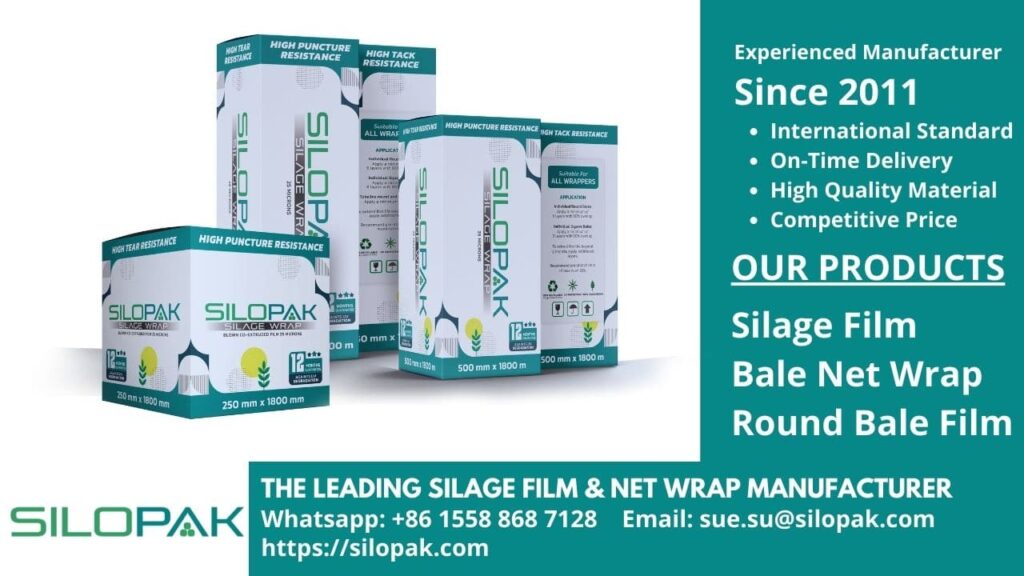
Silage making is an ancient agricultural practice that dates back more than 3,000 years ago. However, the application of this technology that rapidly increased by silage wrap film manufacturers occurred after the 1940s. In the temperate of Europe and North America, silage making is well established but has recently widespread and become popular in the tropics.
contents
Silage Problems in Many Countries
South Africa
In South Africa, whole corn (Zea Mays) is widely used in silage production because of its high yield, high water-soluble carbohydrate (WSC) concentration, and low buffering capacity. This makes maize silage a key forage fiber source for ruminants. However, its high WSC and lactic acid (LA) content make it prone to spoilage by microorganisms like yeast. Therefore, maintaining anaerobic conditions in bunker storage is essential for preserving maize silage effectively.
Brazil
Farmers typically preserve maize silage in silo bunkers lined with low-density polyethylene (PE) film. This film covers the forage and creates anaerobic conditions, crucial for preservation. PE film is a preferred choice due to its durability, resistance to environmental stress, and cost-effectiveness. In Brazil, horizontal silos are popular for their efficiency and lower construction costs, but they risk air exposure, leading to potential aerobic decay. In cold regions, corn’s growth and fermentation processes are limited by the short, cold season, disrupting the effectiveness of inoculation and natural microorganisms.
Northern Europe
Although the silage inoculants have been used in Northern Europe, the good choice to ensure good fermentation quality, high silage intake, and nutritional value is still acid-based additives in difficult weather conditions.
Southeast Asia
In the humid tropical region in many developing countries, Southeast Asia, small farmers are the carrier of ruminant livestock production. They rely heavily on natural forages to feed their ruminant. In Malaysia, greenery is abundant for most of the tears. However, at times of the dry season, a shortage of forages will be experienced by livestock farmers and cause a problem with ruminant feed.
In hot areas, silage crops are affected by many things. First, high temperatures impact maize yields negatively (margin and whole crops) and nutritional value. Second, alcohol and butyrate fermentation in grasses in the warm season (Pennisetum genera and panicum brachiaria) and sugar cane. The third is the acceleration of aerobic damage to silage.

The Future Perspectives of Silage Wrap Film Manufacturers
Switch to Silage Film Production
The goal of feed conservation is to ensure feed is available during scarcity. Overcoming silage production challenges in extreme temperatures is crucial. Strategies include packing forages into silos at the right density and rate, using silage additives to reduce spoilage, choosing suitable plastic covers, and optimizing daily feeding methods to minimize waste. The plastic film for wrapping silage bales or covering silage must resist bird, hail, and rain damage, and be UV resistant to protect silage from long sun exposure.
Related to all of that, the one-stop solution for the problems such as spoilage by microorganisms, various weather conditions, et cetera is to use high-quality plastic wrap. Get the best quality of bale net wrap and silage film from silage film factory in China, we are an experienced silage wrap film manufacturer you can trust. Last but not least, we do also accept OEM and ODM.

